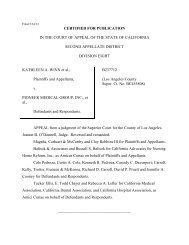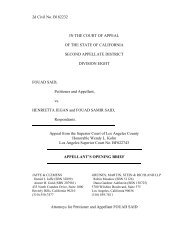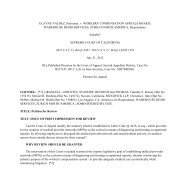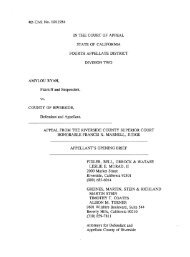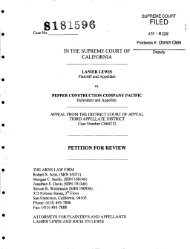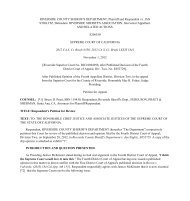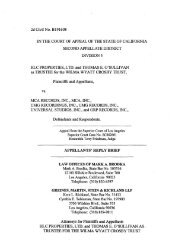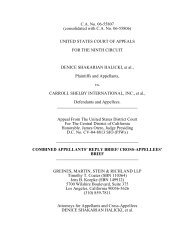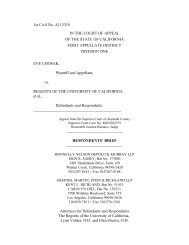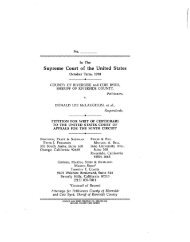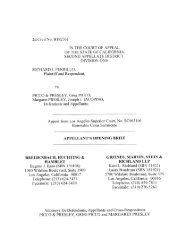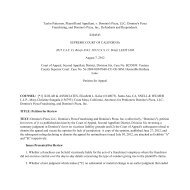McCormick-Gordon v. Cedars-Sinai Medical Center RB
McCormick-Gordon v. Cedars-Sinai Medical Center RB
McCormick-Gordon v. Cedars-Sinai Medical Center RB
You also want an ePaper? Increase the reach of your titles
YUMPU automatically turns print PDFs into web optimized ePapers that Google loves.
Although Dr. Rifkin said that the catheter fragment played a "major<br />
role" in <strong>Gordon</strong>'s death (CT 99:20), elsewhere he made clear that, whatever<br />
"major role" means, it does not mean "reasonable medical probability."<br />
That is because, according to Dr. Rifkin, <strong>Gordon</strong> had only a 50% chance of<br />
surviving his lung transplant, irrespective of any other health conditions or<br />
catheter fragments,. (CT 99: 16-17.) This probability means that it cannot<br />
be "more likely than not" that the catheter fragment, rather than the lung<br />
transplant-to say nothing of all <strong>Gordon</strong>'s other ailments-was what<br />
caused <strong>Gordon</strong>'s death.<br />
The court in Bromme v. Pavitt, supra, 5 Cal.App.4th 1487 came to<br />
precisely the same conclusion: "California does not recognize a cause of<br />
action for wrongful death based on medical negligence where the decedent<br />
did not have a greater than 50 percent chance of survival had the defendant<br />
properly diagnosed and treated the condition." (ld at pp. 1504-1505.) In<br />
Bromme the plaintiff claimed that the defendant's failure to diagnose his<br />
wife's colon cancer caused her death. (ld at p. 1492.) But since the<br />
experts agreed that as of a certain date the wife only had a 50% chance of<br />
survival, the court found that as to any conduct after that date, the plaintiff<br />
failed the more-likely-than-not standard-thus he could not show causation<br />
to the required degree of a reasonable medical probability. (ld. at pp. 1499<br />
1504} According to Dr. Rifkin, <strong>Gordon</strong>'s situation was identical: Even if<br />
2 See also Duarte v. Zachariah (1994) 22 Cal.App.4th 1652, 1657-1658<br />
(overprescription of chemotherapy drug could not be cause of medical<br />
malpractice injury because there was, at best, only a 50% chance<br />
chemotherapy would avert reoccurrence ofthe cancer); Dumas v. Cooney<br />
(1991) 235 Cal.App.3d 1593,1603 (failure to diagnose plaintiffs lung<br />
(continued...)<br />
19



